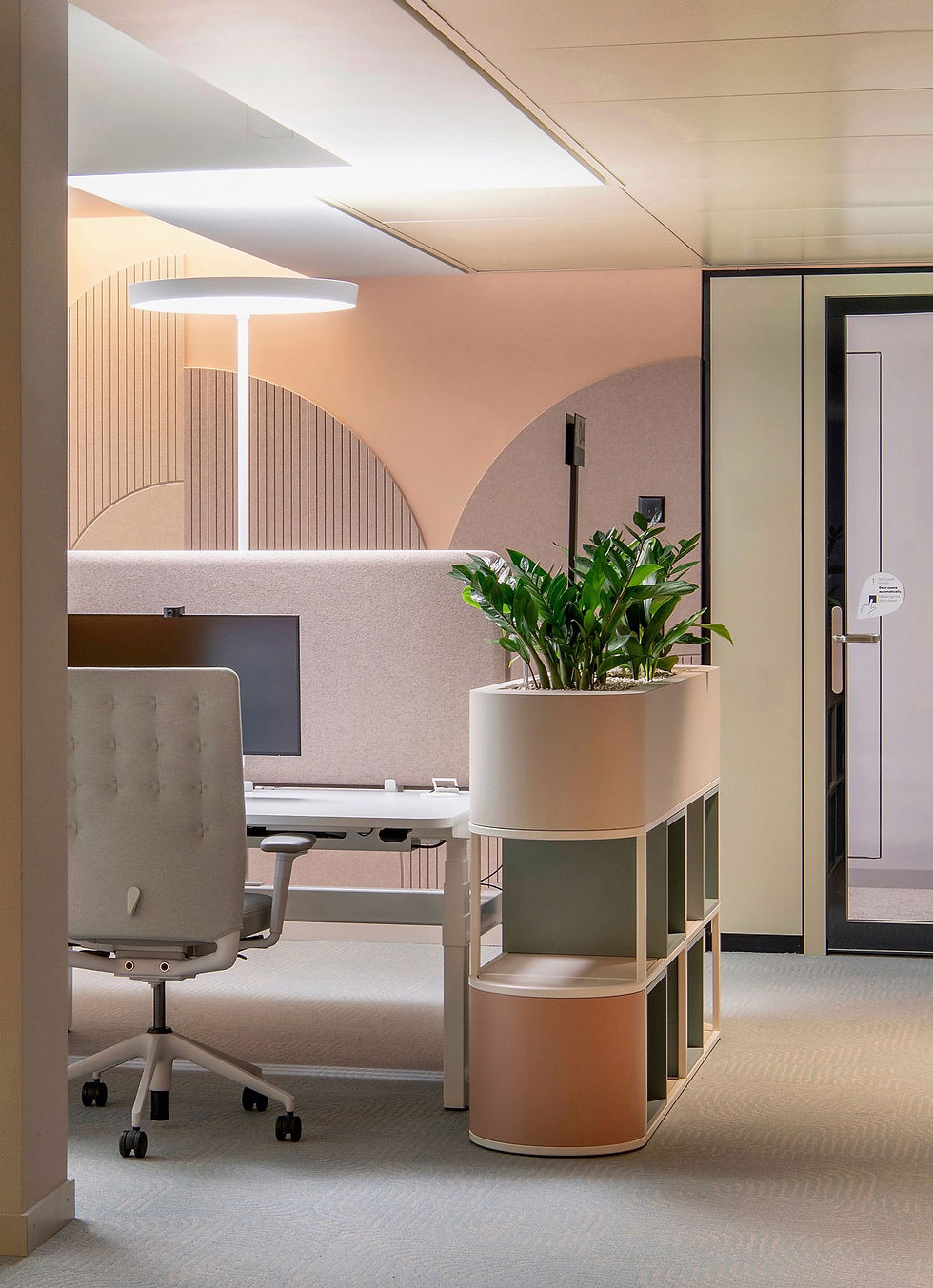ZZ Plant (Zamioculcas zamiifolia)
- Eloïse Beytrison
- Oct 29
- 3 min read
The ZZ Plant, also known as Zamioculcas zamiifolia, has become a true favorite for modern office environments. With its glossy, deep green leaves and almost indestructible nature, it’s the ultimate plant for anyone looking for beauty with zero fuss. Native to Eastern Africa, this resilient plant can handle neglect, low light, and dry air — all while keeping its vibrant look. In this article, we’ll explore the origins, benefits, and care tips that make the ZZ Plant one of the best choices for offices.

Picture: Peter Würmli © Evolution Design
Origin and Characteristics of the ZZ Plant
The ZZ Plant originates from the dry grasslands and coastal regions of Eastern Africa, including Tanzania and Zanzibar (which inspired its name zamiifolia). In its natural habitat, it grows in drought-prone areas, storing water in its thick rhizomes and stems — the secret to its hardiness.
This evergreen perennial is known for its firm, waxy leaves that reflect light beautifully and can range from bright green to almost black, depending on the variety. Indoors, it typically reaches 60 to 90 cm in height, forming upright, symmetrical shoots that add a sculptural touch to any workspace.
The Benefits of the ZZ Plant as an Office Plant
The ZZ Plant is the ultimate low-maintenance plant for busy workplaces. It thrives on minimal attention, tolerates low light, and requires infrequent watering — making it a reliable choice even in windowless offices. Its elegant, architectural shape fits both minimalist and lush design concepts, adding a modern and refreshing green accent.
Beyond its aesthetic appeal, the ZZ Plant also contributes to cleaner indoor air. Studies suggest it helps reduce airborne toxins, such as xylene, toluene, and benzene, supporting a healthier work environment. Its calm, orderly appearance also has a soothing psychological effect, helping employees feel more grounded and focused during long workdays.
Plant Caring for the ZZ Plant
Light: The ZZ Plant tolerates a wide range of light conditions — from low to bright indirect light. Avoid placing it in direct sunlight, as this may burn the leaves.
Watering: Less is more. Allow the soil to dry out completely between waterings. Overwatering is one of the few things that can harm this plant. In most offices, watering every 2–3 weeks is sufficient.
Humidity: The ZZ Plant doesn’t require high humidity and adapts easily to typical office air conditions.
Pruning: Remove yellow or old leaves occasionally to maintain a tidy look. The plant’s slow growth means pruning is rarely needed.
Repotting: Repot every 2–3 years when roots or rhizomes start to outgrow the pot. Use well-draining soil to prevent excess moisture.
Conclusion
The ZZ Plant is a true all-rounder for the workplace — elegant, resilient, and almost indestructible. Its tolerance for neglect, ability to thrive in low light, and air-purifying qualities make it one of the best plants for modern offices. Whether placed on a desk, in a meeting room, or in the lobby, the ZZ Plant adds calm and vitality to any environment — effortlessly.
FAQ
Why do people call the ZZ Plant “unkillable”?
Because it truly is. It stores water in its roots and stems, so it can go weeks — sometimes even months — without attention.
Where should I place it in the office?
Almost anywhere. It thrives in dim corners but also tolerates brighter spots, as long as there’s no harsh sunlight.
What’s the biggest mistake to avoid with the ZZ Plant?
Overwatering. Its roots are sensitive to standing water, so make sure the soil dries completely before watering again.
Does it really clean the air?
Yes, it helps absorb certain indoor pollutants. Plus, its thick, glossy leaves visually freshen up any workspace.
Is the ZZ Plant toxic?
Yes — all parts contain calcium oxalate, which can cause irritation if ingested. Wash hands after repotting and keep it out of reach of pets.








